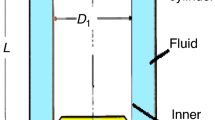Abstract
When the zero shear ciscosity (ZSV) is derived from a creep test, the creep time should be sufficiently long to obtain a steady state with a constant shear rate. The creep test works well for most conventional binders. Unfortunately, for polymer modified binders (PmBs), the long waiting times required to obtain a steady state are not always acceptable from a practical point of view and three are problems concerning the repeatability. This paper compares the steady state creep test to alternative test methods for the determination of the ZSV. One method is a short time creep/recovery test, with a short creep period and a longer recovery period, where the ZSV is derived from the recovery part. The other method is an oscillation test at low frequencies, where the complex viscosity is extrapolated to zero frequency to obtain the ZSV. Measurements are presented on a pure 70/100 binder and on a highly SBS-modified binder. While all methods give comparable and repeatable results for the case of the pure binder, complications occur for the highly modified binder. The oscillation method seems to be the most promising, method.
Résumé
Lorsque la viscosité à taux de cisaillement nul (VTCN) est dérivée d'un essai de fluage, le temps de fluage doit être suffisamment long pour obtenir un état stable où la vitesse de cisaillement est constante. L'essai de fluage convient pour les liants conventionnels. Malheureusement, pour les bitumes modifiés (BmP), les longs temps d'attente nécessaires pour atteindre cet état stable ne sont pas toujours acceptables d'un point de vue pratique et il existe des problèmes concernant la répétabilité. Cet article compare l'essai de fluage avec attente de l'état stable à des méthodes d'essai alternatives pour déterminer la VTCN. Une des méthodes consiste en un essai fluage/recouvrance, avec une période de fluage courte et une période de recouvrance plus longue. La VTCN est alors dérivée de la partie recouvrance. L'autre méthode consiste en un, essai d'oscillation à basse fréquence. La viscosité complexe est extrapolée à la fréquence zéro pour obtenir la VTCN. Des résultats de mesure sont présentés pour un liant conventionnel (70/100) et pour un BmP à teneur élevée en SBS. Tandis que toutes la méthodes donnent des résultats comparables et répétables pour le liant conventionnel, beaucoup de complications apparaissent pour le bitume modifié à teneur élevée en SBS. La méthode d'oscillation semble la méthode la plus prometteuse.
Similar content being viewed by others
References
‘Superior Performing Asphalt Pavements: The product of the SHRP Asphalt Research Program’, SHRP-A-410, National Research Council, 1994.
Phillips, M. and Robertus, C., ‘Binder rheology and asphaltic pavement permanent deformation; the zero-shear viscosity’, Proc. Eurasphalt & Eurobitume Congress 1996, paper 5.134.
Sybilski, D., ‘Validation of empirical tests for polymer-modified bitumens’, Proc. Eurobitume Workshop 99, Paper no 088.
Gershkoff, D.et al., ‘The influence of binder properties on the wheel-tracking rate of hot rolled asphalt’, Proc. Eurasphalt & Eurobitume Congress 1996, paper 5.150.
NCHRP report 459, ‘Characterization of Modified Asphalt Binders in Superpave Mix Design’, National Research Council, 2001.
Bahia, H.U.et al., ‘Development of binder specification parameters based on characterization of damage behavior’, Proc. of 2001 meeting of AAPT, 442–470.
Desmazes, C.et al., ‘A protocol for reliable measurement of zero-shear viscosity in order to evaluate the anti-rutting performance of binders’, Proc. Eurasphalt & Eurobitume Congress 2000, Book 1, 203–211.
Cross, M., ‘Rheology of non-Newtonian fluids: a new flow equation for pseudoplastic systems’,J. of Colloid Science 20 (1965) 417–437.
Author information
Authors and Affiliations
Additional information
Editorial Note Presented at the 6th International RILEM Symposium on Performance Testing and Evaluation of Bituminous Materials (PTEBM'03), held on 14th–16th April 2003, in Zurich, Switzerland, this paper was selected as an outstanding communication and peer-reviewed by the Scientific Committee of the JournalMaterials and Structures.
Rights and permissions
About this article
Cite this article
De Visscher, J., Vanelstraete, A. Practical test methods for measuring the zero shear viscosity of bituminous binders. Mat. Struct. 37, 360–364 (2004). https://doi.org/10.1007/BF02481684
Received:
Accepted:
Issue Date:
DOI: https://doi.org/10.1007/BF02481684




